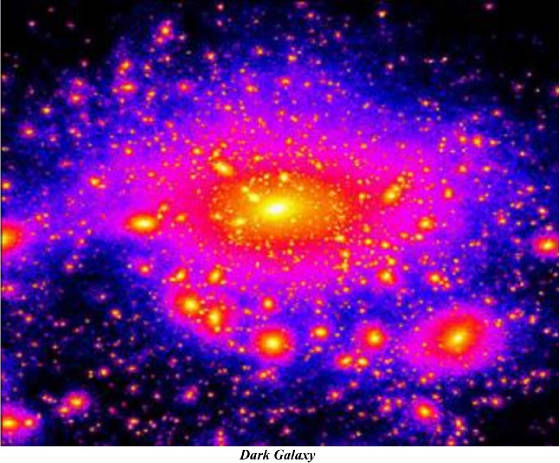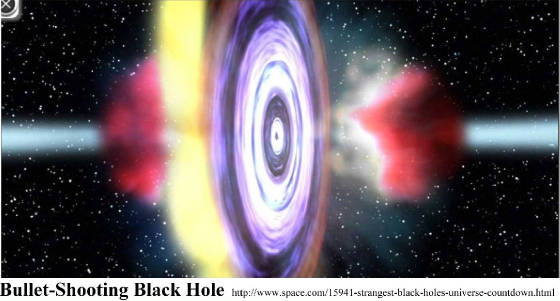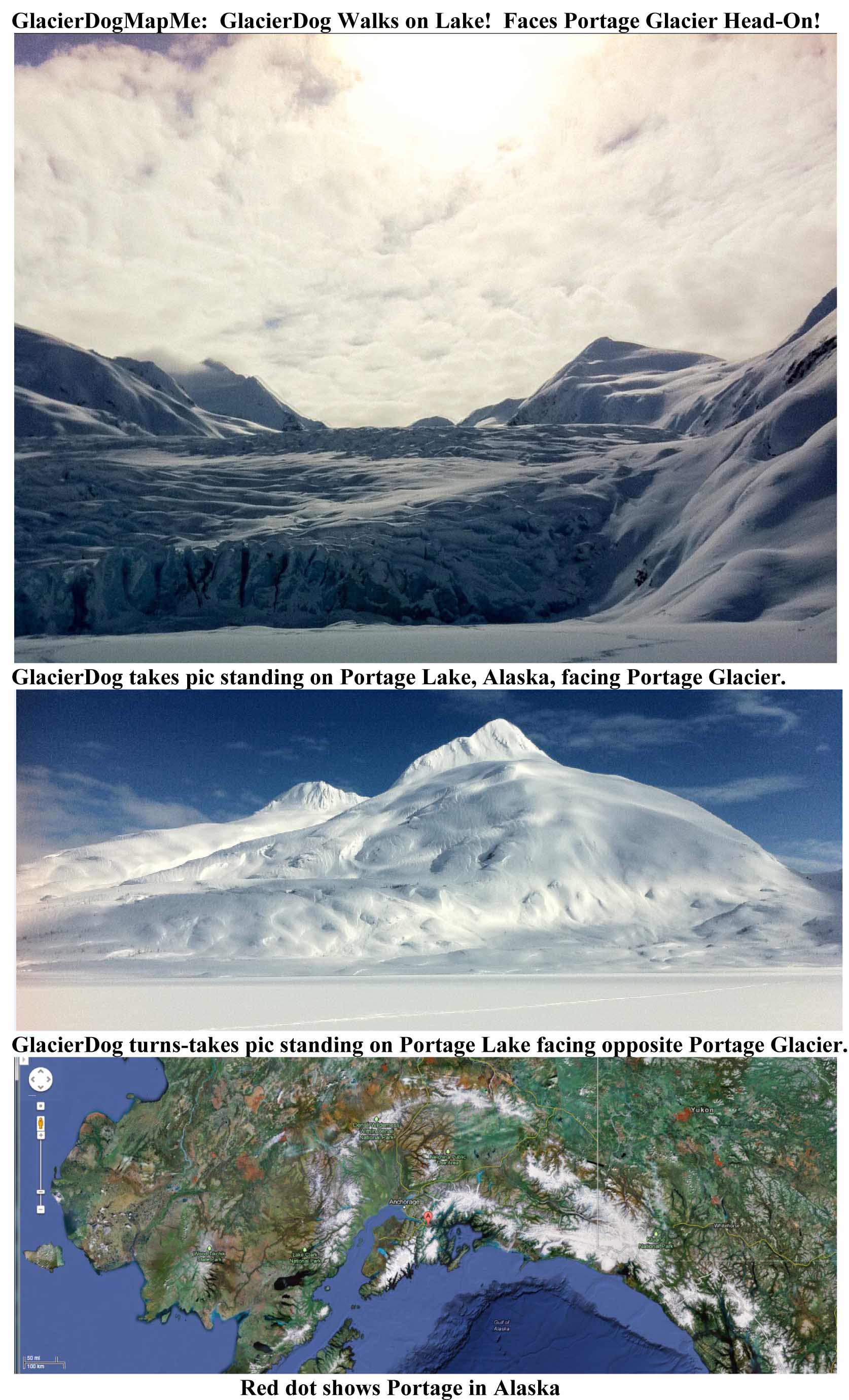|
----------
GlacierDogMapMe: What is a Dark Galaxy?
 GlacierDogMapMe: What is a Dark Galaxy? * Dark galaxies are small, gas-rich galaxies in the early Universe that are very inefficient
at forming stars, predicted by theories of galaxy formation, and are thought to be the building blocks of today’s bright,
star-filled galaxies. Astronomers think that they may have fed large galaxies with much of the gas that later formed into
the stars that exist today. Because they are essentially devoid of stars, these dark galaxies don’t emit much light,
making them very hard to detect. * “Our approach to the problem of detecting a dark galaxy was simply to shine
a bright light on it.” explains Simon Lilly of ETH Zurich, Switzerland. “We searched for the fluorescent glow
of the gas in dark galaxies when they are illuminated by the ultraviolet light from a nearby and very bright quasar. The light
from the quasar makes the dark galaxies light up in a process similar to how white clothes are illuminated by ultraviolet
lamps in a night club.” (Quasars are very bright, distant galaxies that are believed to be powered by supermassive black
holes at their centres.) * The team took advantage of the large collecting area and sensitivity of the Very Large Telescope (VLT), and a series of very long exposures, to detect the extremely faint fluorescent
glow of the dark galaxies. They used the FORS2 instrument to map a region of the sky around the bright quasar HE 0109-3518,
looking for the ultraviolet light that is emitted by hydrogen gas when it is subjected to intense radiation. Because of the
expansion of the Universe, this light is actually observed as a shade of violet by the time it reaches the VLT. http://www.dailygalaxy.com/my_weblog/2012/07/dark-galaxies-of-the-universe-observed-for-the-first-time.html GlacierDogMapMe Website: http://www.glacierdogpublishing.com
----------
GlacierDogMapMe: Small Galaxy Surrounded by Huge Disk of Hydrogen
Gas.
GlacierDogMapMe:
Small Galaxy Surrounded by Huge Disk of Hydrogen Gas. * The Radio/Optical Image is of dwarf galaxy UGC 5288. The bright white center object
is visible-light; purple is giant hydrogen-gas disk. Using the National Science Foundation’s Very Large Array (VLA) radio telescope, astronomers found that this small galaxy 16 million
light-years from Earth is surrounded by a huge disk of hydrogen gas that has not been involved in the galaxy’s star-formation
processes and may be primordial material left over from the galaxy’s formation. Credit: http://www.dailygalaxy.com/my_weblog/2012/07/dwarf-galaxies-the-cosmic-equivalent-of-viewing-ancient-greece-live-today.html
----------
GlacierDogMapMe: Jets of Material Enriched with Iron and Other
Metals from Black Hole.
GlacierDogMapMe: Jets of Material Enriched with Iron and Other Metals from Black Hole.
* Hydra A is a galaxy cluster about 840 million light years
from Earth. * Evidence for powerful outbursts
from the supermassive black hole at the center are seen in the Chandra data. *
The Chandra data show jets of material from the black hole are enriched with iron and other metals. Credit:
http://chandra.harvard.edu/photo/2009/hydra/
----------
GlacierDogMapMe: Can Black Holes Shoot Out Matter?
 GlacierDogMapMe: Can Black Holes Shoot Out Matter? “Bullet-Shooting Black Hole”: “Black holes are known for sucking in
matter, but researchers find they can shoot it out as well. Observations of a black hole called H1743-322,
which harbors five to 10 times the mass of the sun and is located about 28,000 light-years from Earth, revealed it apparently
pulled matter off a companion star, then spat some of it back out as gigantic “bullets” of gas moving at nearly
a quarter the speed of light. The black hole’s “belch” is actually a bipolar jet of plasma
(ionized gas) that discharges particles from the centre of an accretion disc (a structure that moves material toward its centre
- in this case, the black hole). This galactic belch ejects particles, scattering them amongst stars and
planets, and may also affect magnetic fields in the galaxy.” Credit: Greg Sivakoff/University of Alberta. http://www.space.com/15941-strangest-black-holes-universe-countdown.html
----------
GlacierDogMapMe: What is the Most Southerly Active Volcano on
Earth?
GlacierDogMapMe:
What is the Most Southerly Active Volcano on Earth? Antarctica’s Mount Erebus. 12,448
feet above sea level, Mount Erebus is the most southerly active volcano on the planet. “Its slopes are covered with
snow and ice, glaciers, crevasses, and the occasional lava flow, but steam usually rises from its summit, betraying the heat
within. If Erebus were a dessert, it would be a reverse baked Alaska--frozen on the outside, hot in the middle.” http://ngm.nationalgeographic.com/2012/07/mount-erebus/judson-text
----------
GlacierDog MapMe: Did You Know the Sun on July 2, 2012 had
Almost an X-Class Flare?
GlacierDogMapMe:
Jul 2, 2012 At 10:52 UT, active region 1515 (AR1515) unleashed a M5.6-class solar flare bathing the Earth’s
atmosphere with X-ray and extreme ultraviolet radiation. At that energy, the flare wasn’t that far from becoming an
X-class flare -- the most powerful variety of solar eruption. http://news.discovery.com/space/solar-flare-ionizes-europe-skies-120702.html
----------
GlacierDog Walked on Lake - Faces Portage Glacier Head-On!
Amazing Experience...
 GlacierDog
Walked on Lake - Faces Portage Glacier Head-On! Amazing Experience… * GlacierDog was standing in the middle of Portage Lake to snap these photos. GlacierDog
is originally from warmer climates where walking on water is not common. High winds capable of knocking
anyone off his or her feet - even those with four of them - are quite common here! These winds caused the
interesting swirly snow pattern on the mountain that sits opposite to Portage Glacier. * Just over the mountain with the swirly snow is the historical town of Whittier,
Alaska, established by the U.S. Army during World War II. There is a 2.5-mi railroad tunnel that was blasted
through the mountain from Whittier to Portage. The tunnel was completed in 1943
and became the primary debarkation point for cargo, troops, and dependents of the Alaska Command. The Port
of Whittier was then recognized as a strategic ice-free, deepwater port. Today, the only “road”
access between Whittier and the rest of Alaska is through the train tunnel, which is opened for motor vehicles in each direction
separately each half-hour. It is the longest combined vehicle-railroad tunnel in North America!
----------
GlacierDog MapMe: Do You Know Where To Find Milky Way's
Central Black Hole?
GlacierDogMapMe:
Do You Know Where To Find Milky Way’s Central Black Hole? * “At the center lurks the Milky Way’s
central black hole, also known as Sagittarius A* (pronounced “A-star”) because it lies in the constellation
Sagittarius. Most galaxies have such a central black hole around which stars, gas and dust swirl as if going down a drain.
Sagittarius A* is a heavyweight among black holes, coming in at around 4 million times the mass of the Sun (although it is
only about 15 times as wide).” http://www.sciencenews.org/view/feature/id/341117/title/At_Home_in_the_Universe
See MapMe of Worlds Deepest Lake & Canyon, American Stonehenge, IceCube at S.Pole, Giants Causeway, Denali, Exploded Star,
Stellar Nursery, S.Pole Life, H2O in Space, Largest Eruption, Planet or Star, Diamond Planet, Dome facing Obelisk at Vatican
and at DC!
GlacierDogMapMe is also on glacierdog.tumblr.com
|

